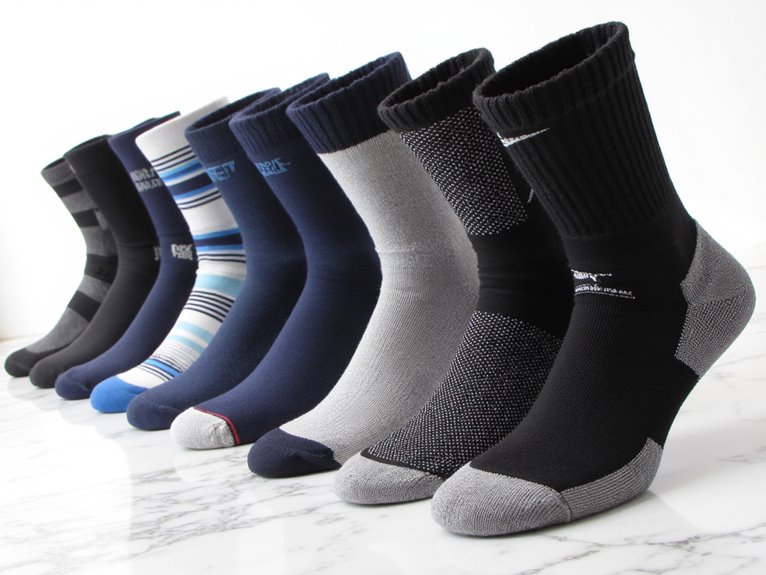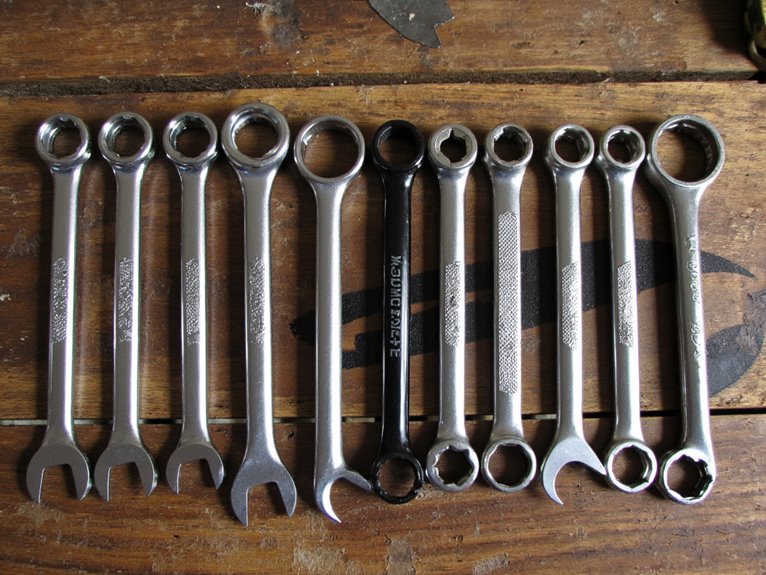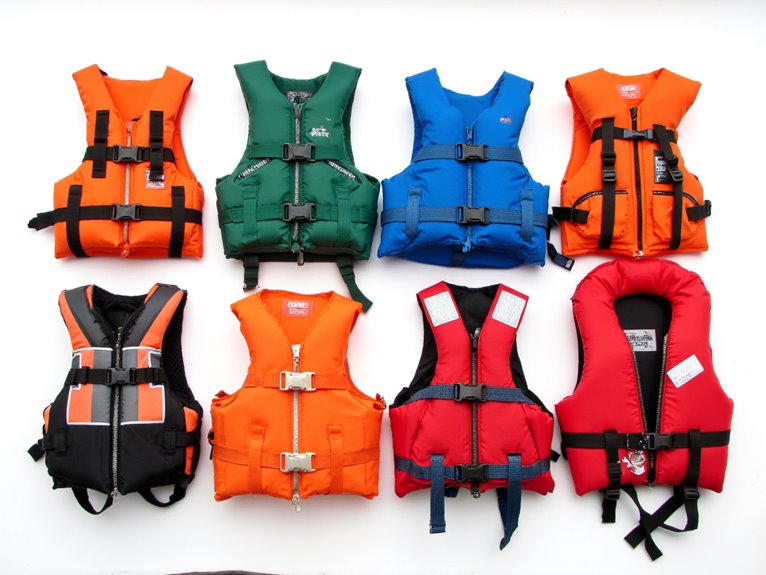Do You Need Hiking Poles for Mt Whitney?
Mt. Whitney's unforgiving terrain demands careful preparation and strategic equipment choices, including the critical decision of whether to bring hiking poles. The mountain's steep inclines, rugged trails, and unpredictable mountain weather require careful footwork, balance, and agility, making every step a deliberate and calculated move. Hiking poles can provide increased stability and reduced fatigue on steep trails, distributing weight more evenly and reducing the risk of slipping or falling. To conquer Mt. Whitney, it's essential to understand the benefits and importance of hiking poles, and discovering how they can improve your chances of a successful summit.
We are supported by our audience. When you purchase through links on our site, we may earn an affiliate commission, at no extra cost for you. Learn more. Last update on 1st January 2026 / Images from Amazon Product Advertising API.
Understanding Mt Whitney's Terrain
Mt. Whitney's terrain is characterized by steep inclines, rugged trails, and unpredictable mountain weather, demanding a high level of physical fitness and mental preparedness from aspiring hikers.
The mountain's unique geography presents numerous challenges, including rocky outcroppings, snowfields, and scree slopes.
Hikers must navigate through dense forests, cross rushing streams, and climb steep switchbacks, all while adapting to high altitudes and extreme weather conditions.
The trail's steepness and unevenness require careful footwork, balance, and agility, making every step a deliberate and calculated move.
Understanding Mt. Whitney's terrain is essential for a safe and successful ascent, as it allows hikers to prepare physically, mentally, and strategically for the adventure ahead.
Benefits of Hiking Poles on Steep Trails
When tackling steep trails like Mt. Whitney's, hiking poles can be a game-changer.
On these challenging routes, poles provide two critical benefits: increased stability and reduced fatigue.
Increased Stability
Hikers tackling steep trails like Mt. Whitney's notorious 97-switchback ascent can greatly benefit from the added stability that hiking poles provide, allowing them to maintain balance and confidence on treacherous terrain.
On steep inclines, poles help distribute weight more evenly, reducing the risk of slipping or falling. This is particularly vital on Mt. Whitney's steep and rocky sections, where a single misstep can have serious consequences.
Reduced Fatigue
By providing additional support and assistance, hiking poles can substantially reduce the physical demands of steep terrain, allowing hikers to conserve energy and tackle challenging trails like Mt. Whitney with renewed vigor.
On grueling inclines, poles distribute the weight and effort more evenly, taking pressure off the legs and knees.
This redistribution of energy expenditure enables hikers to maintain a steady pace, even on the most demanding sections of the mountain.
With poles, hikers can enjoy a more sustainable and efficient climb, arriving at the summit feeling fresher and more energized.
Dealing With Snow and Ice
When tackling Mt. Whitney's snow-covered trails, maintaining traction is essential to avoid slips and falls.
On hard ice, specialized gear is necessary to provide a secure footing, and in steep slope situations, crampons become a paramount component of your hiking arsenal.
Traction on Hard Ice
How do you maintain stability and control on Mt. Whitney's treacherous, hard ice surfaces, where one misstep can have disastrous consequences?
The key to navigation lies in effective traction.
Microspikes or Yaktrax are excellent solutions for traversing hard ice, providing a secure grip and confidence-boosting stability.
These lightweight, easy-to-use devices attach to your boots, distributing pressure and facilitating smooth movement.
They're particularly useful on flat or moderately inclined surfaces, allowing you to focus on the breathtaking scenery rather than worrying about slipping.
Crampons for Steep Slopes
Mt. Whitney's steep slopes, blanketed with snow and ice, demand a more aggressive approach to traction, and that's where crampons come into play.
These essential tools provide the necessary grip and stability to tackle the mountain's treacherous terrain.
When choosing crampons for Mt. Whitney, consider the following key factors:
Weight and durability: Look for lightweight yet durable crampons that can withstand the harsh alpine environment.
Adjustability: Opt for crampons with adjustable bindings to secure a snug fit on various boot sizes.
Ice axe compatibility: Verify that your crampons are compatible with your ice axe, allowing for seamless shifts between tools.
Anti-balling plates: Crampons with anti-balling plates will help prevent snow and ice from accumulating on the spikes, maintaining peak traction.
Stability and Balance on Rocky Ground
Rocky terrain demands careful footwork, and hiking poles can substantially improve stability and balance on uneven, rocky ground.
On Mt. Whitney's rugged trails, a misstep can be costly, making poles a valuable asset.
By providing additional points of contact, poles help maintain equilibrium on rocky outcroppings, boulders, and slippery surfaces.
This is particularly vital when ascending or descending steep sections, where a loss of balance can have serious consequences.
With poles, hikers can focus on their footing, rather than worrying about staying upright.
This increased stability allows for more confident and efficient movement, making the hike more enjoyable and safer overall.
On rocky terrain, hiking poles can be the difference between a successful summit bid and a potentially disastrous fall.
Reducing Fatigue on Long Hikes
When tackling long hikes like Mt. Whitney, reducing fatigue is vital to reaching the summit.
By adopting strategies to conserve energy, hikers can guarantee they have the stamina to tackle the most challenging sections of the trail.
Save Energy Early
Saving energy early is vital to completing the hike successfully. It's essential to adopt a pace that allows you to maintain a consistent rhythm throughout the hike.
Take regular breaks to rest and rehydrate. Avoid bursts of energy expenditure, opting for a steady, consistent pace.
Distribute your weight evenly, using your backpack and poles (if using) to reduce fatigue.
Monitor your body's signals, stopping to address any discomfort before it becomes a more severe issue.
Conserve Leg Strength
On long, demanding hikes like Mt. Whitney, conserving leg strength is essential to maintaining a steady pace and avoiding debilitating fatigue.
As you ascend, your legs bear the brunt of the climb, and exhausting them prematurely can lead to a sluggish pace and increased risk of injury.
Using hiking poles can help alleviate some of this strain, allowing you to conserve energy and maintain a consistent pace.
By taking some of the weight off your legs, poles enable you to focus on the trail ahead, rather than struggling to propel yourself upward.
This conservation of leg strength is critical, especially on long, grueling climbs like Mt. Whitney, where every ounce of energy counts.
Boost Endurance Later
Frequently, hikers who employ hiking poles on long, demanding climbs like Mt. Whitney report a significant reduction in fatigue later in the hike, allowing them to tackle the final stretches with renewed energy and confidence.
By redistributing the weight and effort of hiking, poles help conserve energy and reduce muscle fatigue. This is particularly important on long, high-altitude hikes where every ounce of energy counts.
Some key benefits of using hiking poles to boost endurance include:
- Reduced muscle strain on legs and knees
- Improved balance and stability on uneven terrain
- Increased overall hiking efficiency and speed
- Boosted confidence and reduced mental fatigue
Essential Features for Mt Whitney Poles
When tackling the highest summit in the contiguous United States, having the right hiking poles with essential features can make all the difference between a successful climb and a disastrous one.
For Mt. Whitney, look for poles with durable, adjustable-length shafts to accommodate varying terrain and snow conditions.
Ergonomic grips and comfortable straps are a must for reducing fatigue and preventing blisters.
Additionally, consider poles with shock-absorbing technology to reduce the impact on joints.
Other essential features include sturdy, rust-resistant tips and baskets that can handle snowy and icy conditions.
Choosing the Right Hiking Pole Material
What sets great hiking poles apart from mediocre ones is the choice of material, which can substantially impact their durability, weight, and overall performance on the challenging terrain of Mt. Whitney.
When selecting the right material for your hiking poles, consider the following key factors:
Lightweight yet durable: Carbon fiber and aluminum alloys are popular choices, offering a balance between weight reduction and strength.
Corrosion resistance: Look for materials with a durable coating or anodizing to withstand harsh mountain conditions.
Shock absorption: Some materials, like carbon fiber, can help absorb shock and reduce vibration.
Ergonomic grip: A comfortable, non-slip grip material is essential for a secure hold, even in wet or icy conditions.
Tips for Assembling and Adjusting Poles
Before setting out on your Mt. Whitney hike, take a few minutes to properly assemble and adjust your hiking poles, as a well-fitted pole can substantially improve your overall hiking experience.
Begin by attaching the pole sections, ensuring they are securely locked in place.
Next, adjust the length to fit your stride, keeping in mind the terrain and your personal comfort.
Hold the grip at a 90-degree angle, with your elbow bent at a 90-degree angle, and adjust the length accordingly.
Finally, tighten any locking mechanisms to prevent accidental adjustments during your hike.
A properly assembled and adjusted pole will provide the necessary support and stability for a successful summit of Mt. Whitney.
Alternatives to Traditional Hiking Poles
For hikers who prefer to avoid the bulk of traditional hiking poles or seek a more minimalist approach, alternative options have emerged as viable solutions for tackling the rugged terrain of Mt. Whitney.
These alternatives cater to hikers who prioritize lightweight gear or prefer a more subtle approach to trekking poles.
Some popular alternatives to traditional hiking poles include:
- Trail running poles: Lightweight and compact, these poles are designed for runners but can also be used for hiking.
- Trekking pole alternatives: Made from durable materials, these alternatives provide stability without the bulk.
- Handheld trekking quivers: These quivers provide stability and balance without the need for traditional poles.
- Ultralight poles: Designed for thru-hikers and minimalist adventurers, these poles are incredibly lightweight and compact.
Mt Whitney Hiker Reviews and Insights
Mt. Whitney hikers who have tackled the mountain's rugged terrain offer valuable insights and reviews on the effectiveness of hiking poles, providing a firsthand perspective on the gear that helped them conquer the highest peak in the contiguous United States.
Many hikers praise hiking poles for their stability and balance on the steep and rocky trails, especially on the infamous 97-switchback route.
Others highlight the relief they provide on the knee-joint, allowing them to conserve energy for the grueling climb.
However, some seasoned hikers argue that poles can be a hindrance in certain sections, such as the boulder fields, and recommend using them judiciously.
These varied perspectives underscore the importance of considering individual needs and hiking styles when deciding whether to bring hiking poles on a Mt. Whitney expedition.






